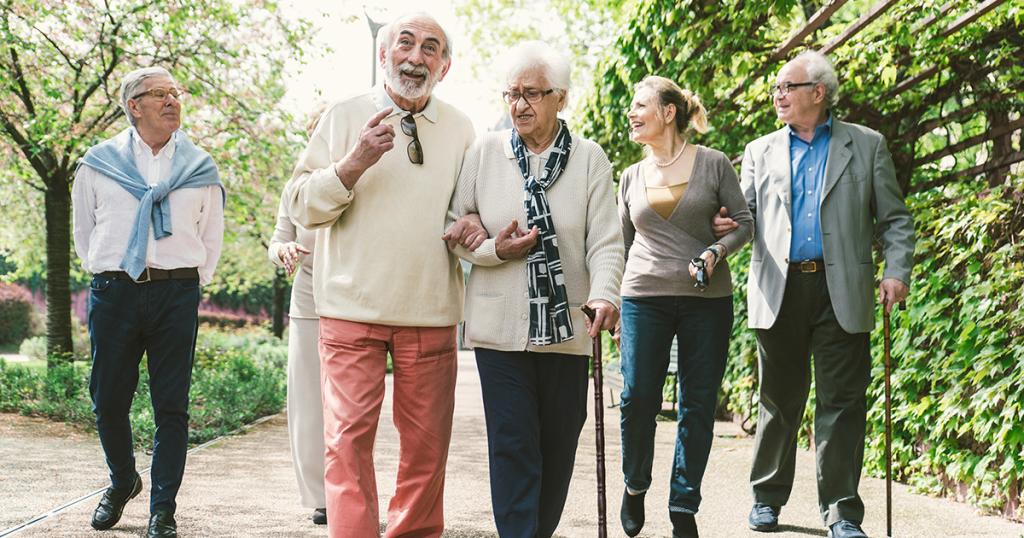Osteoarthritis of the knee may not be a deadly disease, but it is one of the body’s abnormalities that causes many people to lose their quality of life. And currently, this disease is not limited to the elderly group only. Whether it is younger people, those who have injured their knees, exercise with inappropriate equipment, use their knees too strenuously, or are overweight, they may also experience pain caused by osteoarthritis of the knee.
Symptoms of Osteoarthritis of the Knee
- Severe knee pain when walking, going up and down stairs, getting up, sitting, etc., to the point that one cannot carry on with their normal lives
- Knee pain while sleeping
- Frequent, chronic inflammation and warmth in the knees
- Knee deformation from its original state, bending out or in
- Stiff knee, difficult to straighten or bend
Due to the incorrect understanding that knee replacement surgery will cause postoperative pain, and that it takes a long time to return to normal daily life, many patients hesitate to undergo surgery. However, if choosing to receive treatment by expert physicians in a hospital using modern technology, it’s possible to alleviate the worries mentioned above.
Before Knee Surgery, Rest Assured
A personalized treatment program (Customize Service) of the Hip and Knee Center at Bangkok International Hospital pays attention from the planning stage of surgery. Since patients have different conditions, the use of Digital Template, a computer program to help plan, is to find the suitable size of the artificial knee joint for the patient, including the thickness or size of the bone to be cut, and at what angle, especially in cases with significant deformity, or those who have had fractures or previous surgeries.
After completing the first step, it continues with the Total Knee Pathway as a standard practice to prevent any errors before surgery, listing what needs to be checked, such as health information, patient’s abnormalities, pre- and post-surgery medications, and appropriate equipment.

After Knee Surgery, Less Pain, Fast Recovery
Because…
- The surgical technique that preserves tissue without bruising, and the use of a radiofrequency blood-arresting device (Aquamantys) that doesn’t char tissues, and a pain management system, help patients experience less pain, recover faster. Most surgeries use spinal anesthesia to prevent pain during surgery, and postoperative pain is managed with an Adductor Canal Block by injecting anesthetic above the knee and applying a slow-release medication to automatically reduce pain while allowing muscles to function. Surgery can take about 1 – 2 hours depending on the difficulty of each knee. After surgery, especially older patients may stay in a semi ICU room for 1 night, then move to a regular room, where physical therapists teach leg movements, knee bending, and walking within 24 hours after surgery (results may vary from person to person).
- Post-surgical knee muscle rehabilitation by a closely observing physical therapy team, and physical therapy with the Alter-G (Anti Gravity Treadmill) or gravity-defying treadmill, supports the patient to lift, takes steps without pain when putting weight on, helping in a faster recovery. Within the first day, patients can move and walk. After completing the 5-day program, most patients can walk home, live their daily lives, but running or jumping is not recommended. More than 90% can sit on the floor, squat, and older patients can engage in light sports like golf, cycling, or swimming.
System to Prevent Complications During and After Surgery
During surgery, a radiofrequency blood-arresting device (Aquamantys) that doesn’t char tissues is used, also helping to reduce blood loss after surgery. The technique with minimal bruising, combined with special surgical attire similar to an astronaut suit, can help reduce postoperative infections. Side effects include deep vein thrombosis leading to potentially fatal pulmonary embolism, caused by patients not moving due to pain and the body’s mechanism of creating clotting factors. Other causes include existing patient illnesses such as obesity, cancer, or high doses of certain hormones. Therefore, moving as soon as possible after surgery combined with the use of compression stockings to facilitate blood circulation, along with post-surgical anticoagulant medication taken at home for 2 weeks, can prevent these conditions.
Not Everyone Needs to Undergo Surgery
Treatment of osteoarthritis of the knee focuses on the patient’s needs, not everyone ends up needing surgery. The treatment emphasizes according to the stage of osteoarthritis, if one can still cope with the condition, a change in usage, such as
- Avoiding squatting, sitting in a crouching position
- Choosing lighter sports like swimming, walking fast, cycling, and adjusting the seat height to fully extend the knees
- Adjusting daily life, reduce kneeling, regularly exercise thigh muscles, when sitting for a long time and feeling stiff, should stretch legs in a sitting position and count 1 – 10 to strengthen the thigh muscles, making knees more stable and reduce pain
- Weight control
- Elderly should only use stairs when necessary
If osteoarthritis is not severe, treatment with medication for symptoms, injecting artificial joint fluid to reduce friction in the knees is possible. If not bearable, limited steroid injections are an option. But if all treatments fail, surgery is required, conducted according to the real needs of the patient.
Ready to move on with life…

